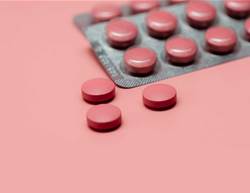Many headlines have cast doubt over tried and tested ways of treating menopause’s unpleasant symptoms. So we’ve asked the experts which are the best and safest ways to handle them.
1. Reduce hot flush triggers
Hot drinks, spicy foods, high temperatures and even caffeine can be triggers for flushes – so avoid them where you can. Studies also show that women in the healthy weight range have fewer hot flushes. Dress in layers, so you can peel them off if a hot flush strikes.
2. Safe and effective hormone replacement therapy
“Menopausal Hormone Therapy (MHT) relieves symptoms and can help protect bone and heart health,” says Dr Sonia Davison, from Jean Hailes For Women’s Health. While recent research caused alarm by linking hormone replacement medication with a higher risk of breast cancer, Dr Davison says that women should not suddenly ditch their MHT. According to the International Menopause Society, the therapies in the studies were different from those currently recommended. If concerned, check with your GP.
3. Deep breathing and mindfulness
Slow breathing helps you regain calm, plus it can also turn down the body’s thermostat. Try taking six to eight breaths per minute (that’s about five seconds in, five seconds out) for 15 minutes twice daily, or whenever you feel a hot flush coming on. “This technique, called paced respiration, has been shown to be effective for managing hot flushes,” Dr Davison says.
4. Plate up with plant oestrogens
Try adding soybeans, chickpeas or lentils to meals. “Phytoestrogens in plant foods may mimic natural oestrogen in the body,” says dietitian Melissa Meier. “Other good sources include tofu and tempeh, flaxseed, oats, barley and rice.”
5. Keep skin supple down there
An alternative to using a lubricant is a vaginal moisturiser like Replens, which makes tissue more elastic, and can be bought over the counter. Or, your doctor may prescribe low-dose oestrogen (it’s been deemed safe). But be patient. “It may take two to three months after starting treatment to see any benefits,” Dr Davison explains.
6. Look for medications with the right side effects
“Research shows antidepressants can reduce hot flushes and sweats by up to 50 or 60 per cent,” Dr Davison says. Other drugs, like anti-epilepsy medication, can help blitz hot flushes, reduce pain and improve sleep quality. And some blood pressure medications can reduce hot flushes and prevent migraines in some women.
7. Look to herbal remedies
Red clover, which can be taken alone or in supplements, has had the best results. “It’s high in isoflavones, which can work a little like oestrogen in the body,” says Sandra Villella, naturopath at Jean Hailes For Women’s Health. Some other herbal ingredients may help, but the evidence is inconclusive. “There is limited evidence that herbs like black cohosh, wild yam and hops reduce hot flushes a little, while supplements like dong quai and evening primrose oil show no benefits,” Sandra says.
8. Use testosterone with caution
Testosterone may rev up your sex life, energy and mood if you are postmenopausal. “It can also improve bone density in some women,” Dr Davison says. “Unfortunately, it may have side effects, such as acne and facial or body hair.” Some experts also believe it can raise heart disease and breast cancer risk. “So if you opt to try testosterone, then make sure you see your GP regularly for supervision,” Dr Davison adds.






.png&h=193&w=250&c=1&s=1)



